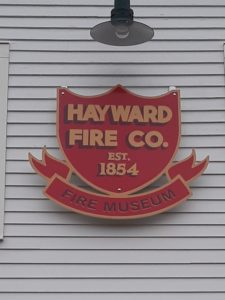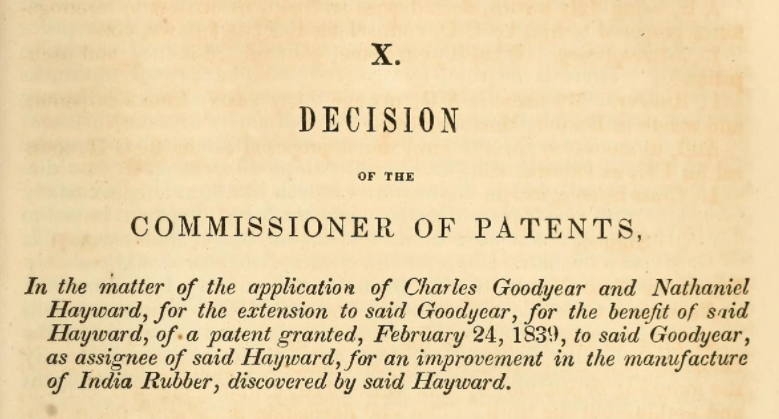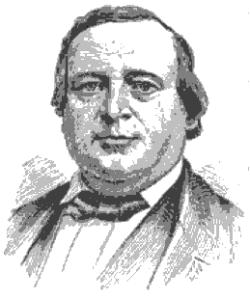By Rick Finkelstein and Leslie Rovetti
Nathaniel Hayward looms large in Colchester, Connecticut’s historical record as a leading industrialist and town benefactor. In 1847, Hayward opened the Hayward Rubber Company on Lebanon Avenue in Colchester—creating the town’s largest industrial establishment, ever. He employed nearly one thousand people, and his plant spawned multiple ancillary businesses to support those workers. In addition, Hayward donated his land for the town green and helped found the fire department and a bank. Modern tributes to Hayward include the Hayward Volunteer Fire Department, Lake Hayward, and Hayward Avenue.
In addition to Hayward’s lasting legacy, Colchester has a persistent myth that Hayward invented vulcanization—a process that helps make rubber useful for manufacturing—but did not receive the credit he deserved. Charles Goodyear—a contemporary of Hayward and another Connecticut local—holds the patent, but some people believe that it was Nathaniel Hayward who actually invented the process. An examination of the patent record, however, proves the story to be false.
Rubber Innovations and Vulcanization
The truth is much less nefarious than the myth. In the early 19th century, rubber—then called India rubber or gum-elastic—was an exotic compound without much practical application. It became rigid and cracked in the cold but sticky and gooey when warmed. According to the patent record, Hayward invented an early method for making rubber useful in manufacturing, but that process was not vulcanization.
Hayward began experimenting with rubber and found that if he spread rubber on cloth and then topped it with sulfur, the rubber became much easier to use. He patented the process in 1839. Although it was a great step forward in the practical use of rubber, it only partially solved the textural problems that were preventing rubber from becoming a commercial success.
According to the Report of the Commissioner of Patents for 1852, Hayward assigned the rights to his patent to Charles Goodyear for $3,000 in 1838. The assignment contract described a complicated system of payment, which included cash, a promissory note, and a license to manufacture rubber cloth. In addition, Hayward began working for Goodyear as an employee—in part so that he could continue legally using the process he invented.
Goodyear then began experimenting with Hayward’s invention. Allegedly, Goodyear accidentally dropped the combination of rubber and sulfur on a stove and learned that heating the compound to a high enough temperature rendered it pliable and much more impervious to atmospheric temperatures. He perfected the process, named it vulcanization, and patented it in 1844.
Patent Disputes
When Goodyear began cashing in on vulcanization, Hayward appeared to regret the sale of his original process; he took Goodyear to court to try for a bigger piece of the rubber pie. According to records, Hayward argued to the commissioner of patents that he only assigned the patent to Goodyear for a 14-year term, and not for an additional seven-year extension. Hayward also claimed that he never received full payment for his patent and should therefore be allowed to keep the seven-year extension as full compensation for his ingenuity.

The fire company started by Hayward still bears his name. The old Hayward firehouse is now a museum in Colchester – Leslie Rovetti and Rick Finkelstein
During Hayward’s appeal of the court’s subsequent rejection, the record notes Hayward’s admission that he did not invent vulcanization. “It has been said that my invention of the combination of India rubber and sulphur is of no value alone. This is an entire mistake,” Hayward wrote in an affidavit. “I consider my invention equally as valuable to be used alone as in combination with Goodyear’s process. A great many goods can be advantageously made without subjecting the India rubber and sulphur to vulcanization.”
A later court record further solidified Goodyear’s claim to the vulcanization patent. In 1852, another rubber manufacturer named Horace Day argued in Goodyear v. Day that Goodyear’s idea was insufficiently original to patent, and that the discoveries of Hayward and others contributed too much for Goodyear to hold a monopoly on the process. Thanks in part to Goodyear’s attorney, Daniel Webster, the court responded that Day had “failed in the attempt to show that himself or any other person discovered and perfected the process of manufacturing vulcanized India rubber before Goodyear.”
In conclusion, Nathaniel Hayward did not invent vulcanization and did not have his work stolen; the legal record proves that Charles Goodyear is the actual inventor. But that does not diminish the fact that Hayward’s invention was a significant step forward in the road to vulcanization. Colchester residents can rest easy knowing that no one cheated Hayward out of a patent, and he received due credit for his work.
Siblings Rick Finkelstein and Leslie Rovetti grew up in Colchester and have long known about the myth of Nathaniel Hayward and the vulcanization patent. Rick, now a patent and trademark attorney with the RC Trademark Company (RCTrademark.com), went digging through the patent record to find the truth. Leslie, a freelance writer in New London County, helped with the writing.










